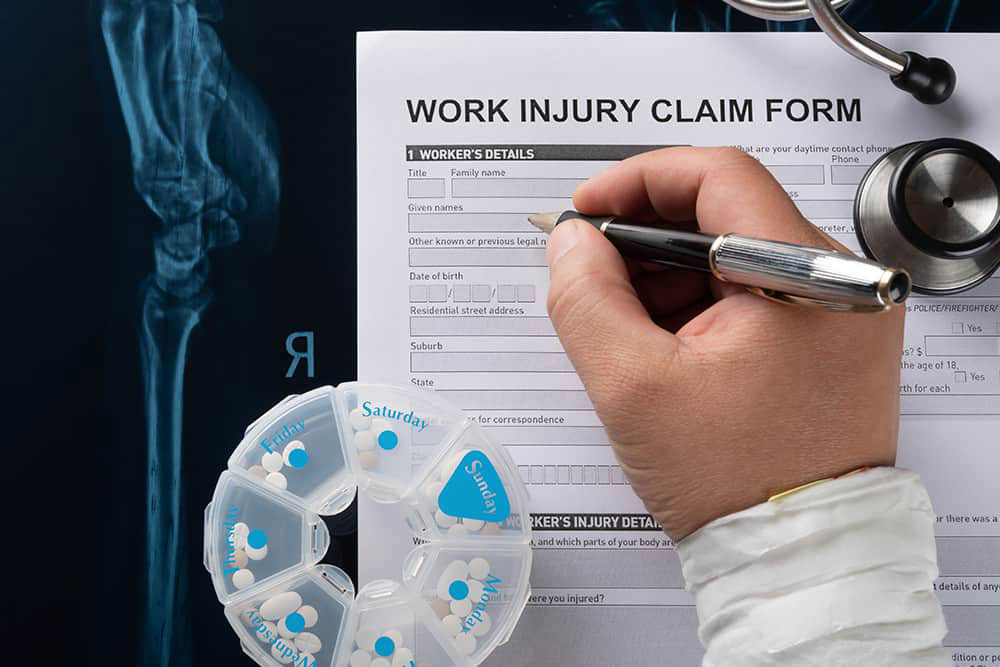
No matter what type of work you do, the chances are that at some point it will involve manual handling. If they are performed incorrectly, manual handling tasks can easily result in serious short or long-term injuries.
But what is it exactly? This article looks at the legal definition, how regulations apply to the workplace, and how to plan and conduct manual handling operations correctly.
Key Takeaways
- Under the Manual Handling Operations Regulations 1992, manual handling is any transporting or supporting of a load, which can be a person or an animal.
- Manual handling can include lifting, putting down, pushing, pulling, carrying or moving by hand or bodily force.
- Employers must avoid manual handling operations ‘so far as is reasonably practicable’.
- Where manual handling occurs, employers have legal duties to carry out risk assessments, take steps to minimise the risk, and provide information and training.
What Does Manual Handling Mean?
The legal definition is outlined in the Manual Handling Operations Regulations 1992.
Section two of the regulations states that:
‘“manual handling operations” means any transporting or supporting of a load (including the lifting, putting down, pushing, pulling, carrying or moving thereof) by hand or by bodily force.’
A ‘load’ is defined by the manual handling regulations as any kind of object, which includes any person or any animal.
All employers, employees, and self-employed people in the UK are legally bound to adhere to these regulations.
How Do the Manual Handling Regulations Impact Your Workplace?
Under the Health and Safety at Work etc Act 1974, employers in the UK have a duty to make sure that the workplace and all work processes are safe for their employees. The Manual Handling Operations Regulations 1992 further clarify the responsibilities of employers, specifically regarding manual handling tasks.
These regulations are as applicable to office or retail workers who occasionally move heavy boxes as they are to construction or factory workers who must regularly move heavy objects.
If your business is found to be in breach of the Manual Handling Operations Regulations 1992, then you could be charged with a criminal offence. Individuals and corporations can be held liable for manual handling breaches. Penalties for breaches can include unlimited fines or even a prison sentence.
Manual Handling Training
Our Manual Handling training course helps users ensure that they are sufficiently trained in the principles and practices of safe manual handling to control and minimise manual handling-related injuries and to ensure a safe workplace for all.
Responsibilities for Employers
The best way to prevent manual handling injuries is to not do manual handling at all. As such, employers have the duty to avoid these tasks ‘so far as is reasonably practicable,’ according to manual handling regulations. But, of course, not lifting or moving objects in the workplace is not usually possible.
If the task must be completed, then the employer has a responsibility to ensure that a manual handling risk assessment is carried out and that appropriate measures are taken to reduce the chance of injury happening.
Ways to do this are by providing lifting equipment or aids, or personal protective equipment (PPE) such as gloves or steel-capped boots, if applicable.
Employers are also required to provide employees with relevant information on all required manual handling operations, such as the weight of the load and if it may become imbalanced. Adequate training on how to properly conduct these operations must also be provided to employees.
Responsibilities for Employees
Employees are also required to comply with manual handling regulations. They must abide by all work processes and make full use of all PPE, lifting equipment and any system of work provided in the manner for which it was intended.
The Health and Safety at Work etc Act 1974 states that employees must ensure that they conduct tasks in a manner that does not endanger themselves or anyone else. Employees are also required to take part in any training provided by the employer.
This infographic can be distributed to your employees to remind them how to avoid manual handling injuries.
The Cost of Manual Handling Injuries to the UK
These injuries are common and include injuries to the back, neck, arms, feet and hands, as well as cuts, bruises, sprains and strains. Any injury that affects the bones, joints or muscles is classified as a work-related musculoskeletal disorder (WRMSD). The effects of WRMSDs are not always immediately apparent and may develop over many years. WRMSDs can be short or long-term.

The impact of manual handling injuries on the British economy is significant. Some 543,000 workers reported that they suffered from a WRMSD during the 2023/24 period, according to the Health and Safety at Work Summary Statistics for Great Britain 2024 compiled by the Health and Safety Executive (HSE). Of these, around 168,000 were reported to be new cases.
This accounted for 32% of all work-related ill health cases in 2023/24. A total of 7.8 million working days were lost during this time due to WRMSDs.
The exact cost of WRMSDs to the economy can be hard to estimate, as many cases are misreported, or workers were not absent for long enough to be included in the statistics. However, the overall cost of work-related injuries in the UK during 2023/24 was estimated to be £21.6 billion.
How to Avoid Manual Handling Injuries
To avoid injuries, all manual handling tasks must be carefully assessed and planned before they are carried out. The risks involved in the task must be identified and evaluated. Appropriate measures to eliminate or control these risks must be implemented.
When performing a risk assessment, the lifting capacity of the individual or individuals involved should be taken into consideration. There should be sufficient lighting and the environment should be clear of obstacles.
If possible, lifting equipment should be used or the load should be broken into smaller pieces. Proper techniques should be followed.
When lifting and moving a load, always:
- Lift with your knees, not your back
- Avoid stooping, twisting or turning
- Make sure you have a good grip
- Lift the load with a fluid, smooth motion
- Keep the load close to your body
- Look forward when carrying the load
- Put the load down on a hip-height surface and rest, if possible
- Lower the load without jerking, twisting or dropping it suddenly
- If the load has to be moved into place, lower it carefully and push it into place
How to Access Accredited Training
Providing your employees with manual handling training will help them to avoid injuries. Access to training is also a legal requirement under the Manual Handling Operations Regulations 1992.
Human Focus offers a range of Handling Courses. Our courses provide industry-specific training on how to assess, plan and conduct these tasks. They run for approximately 30 minutes and can be taken completely online as a whole or in segments to better fit with work schedules. All our training courses are assured by leading UK health and safety bodies.





















